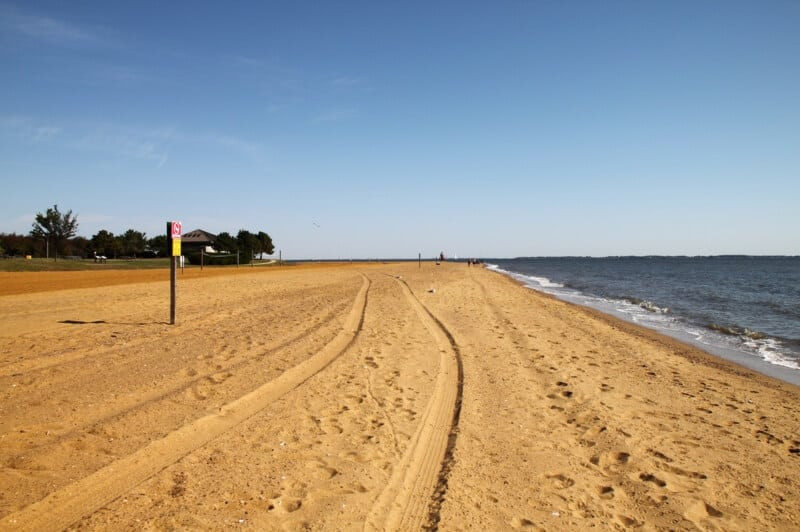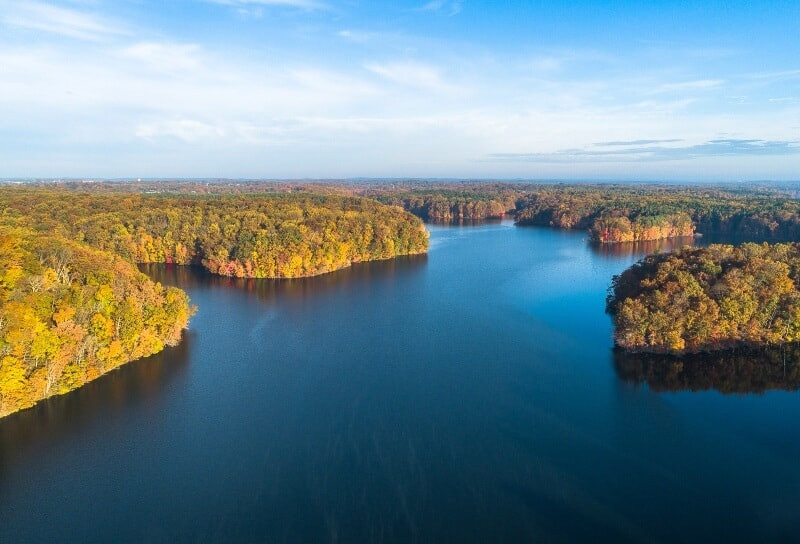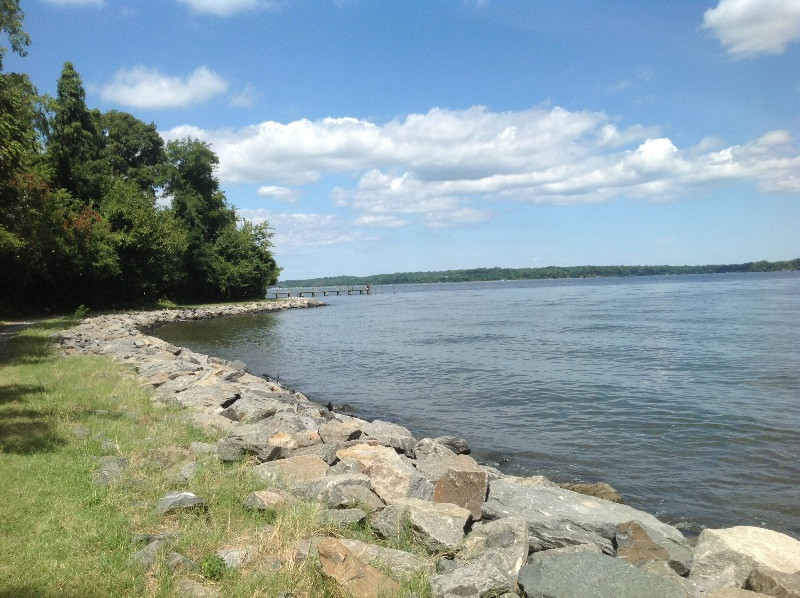Are you searching “Where Can I Fly Drone Near Me” in the USA and feeling overwhelmed by airspace restrictions? At flyermedia.net, we understand the challenges drone enthusiasts face, especially in areas with complex regulations. This guide unveils the best drone flying locations, clarifies FAA guidelines, and provides essential tips for safe and legal flights. Whether you’re a recreational flyer or a commercial operator, understanding the rules and finding suitable locations is key to enjoying your drone experience.
Flyermedia.net helps you discover amazing drone flying spots and navigate the legal landscape.
1. Understanding Drone Regulations: FAA Rules and Local Laws
What are the essential drone regulations I need to know before flying?
Understanding the distinction between recreational and commercial drone operations is the first step. Federal Aviation Administration (FAA) regulations categorize drone pilots as either recreational or commercial operators. Recreational flyers operate drones purely for enjoyment, while commercial operators use drones for business purposes.
1.1 Recreational Drone Flying Rules
What are the rules for recreational drone flying?
Recreational drone pilots must adhere to specific rules outlined by the FAA. These include:
- Registration: Register your drone with the FAA if it weighs over 0.55 pounds (250 grams).
- Fly Below 400 Feet: Keep your drone below 400 feet above ground level (AGL).
- Visual Line of Sight: Always maintain visual line of sight with your drone.
- Airspace Restrictions: Be aware of airspace restrictions and avoid flying near airports or restricted areas without authorization.
- FAA Guidelines: Follow all FAA guidelines and safety recommendations.
- TRUST Certificate: Pass the Recreational UAS Safety Test (TRUST) and carry proof of completion.
1.2 Commercial Drone Flying Rules
What are the rules for commercial drone flying?
Commercial drone pilots operate under Part 107 regulations, which require:
- Part 107 Certificate: Obtain a Remote Pilot Certificate by passing the FAA Part 107 exam.
- Drone Registration: Register your drone with the FAA.
- Airspace Authorization: Request airspace authorization through LAANC or FAADroneZone when operating in controlled airspace.
- Operational Restrictions: Adhere to operational restrictions, such as daylight-only operations (or civil twilight with proper lighting) and avoiding operations over people.
- Aircraft Maintenance: Ensure the drone is in safe operating condition through regular inspections and maintenance.
1.3 Washington, D.C. Drone Laws
What specific drone laws apply in Washington, D.C.?
Washington, D.C., presents unique challenges due to its status as a “No Drone Zone.” The National Capital Region is governed by a Special Flight Rules Area (SFRA) within a 30-mile radius of Ronald Reagan Washington National Airport, severely restricting drone flights.
The FAA’s website offers detailed information on the D.C. No Drone Zone, highlighting areas where drone operations are prohibited. For instance, flying near national monuments, government buildings, and critical infrastructure is strictly forbidden. According to the FAA, unauthorized drone flights in these areas may result in significant penalties, including fines and confiscation of the drone.
It’s crucial to consult local drone ordinances in Washington, D.C. Always exercise good judgment and prioritize safety when flying. Flyermedia.net recommends consulting local drone ordinances in Washington, D.C. When in doubt, exercise good judgment and follow the FAA’s guidelines.
2. Utilizing LAANC for Airspace Authorization
How can I use LAANC to get airspace authorization?
The Low Altitude Authorization and Notification Capability (LAANC) system automates the process of requesting airspace authorization to fly in controlled airspace around airports. Both recreational and commercial flyers can use LAANC through FAA-approved providers such as Aloft and AirMap.
2.1 How LAANC Works
How does the LAANC system work?
- Select an FAA-Approved Provider: Choose a LAANC service provider like Aloft or AirMap.
- Submit a Request: Use the provider’s app to submit your airspace authorization request. Provide details such as location, altitude, and duration of the flight.
- Automated Approval: LAANC automatically checks your request against pre-approved parameters. If your flight meets these criteria, authorization is granted almost instantly.
- Real-Time Updates: Receive real-time updates and notifications regarding airspace restrictions and changes.
2.2 Benefits of Using LAANC
What are the benefits of using the LAANC system?
- Instant Approval: Receive quick authorization for flights in controlled airspace.
- Improved Awareness: Gain better awareness of airspace restrictions and safety advisories.
- Streamlined Process: Simplify the authorization process compared to traditional methods.
3. Top Drone Flying Locations Near Washington, D.C.
Where are the best places to fly a drone near Washington, D.C.?
Despite the restrictions in the immediate D.C. area, several excellent locations nearby offer safe and enjoyable drone flying opportunities. These locations are primarily in uncontrolled, Class G airspace, where you don’t need to request permission to fly.
3.1 Fountainhead Regional Park
What makes Fountainhead Regional Park a great spot for drone flying?
- Location: 10875 Hampton Rd, Fairfax Station, VA 22039
- Airspace Class: Class G — Uncontrolled
- Airspace Map: https://b4ufly.aloft.ai/?lat=38.717070&long=-77.335618
- Description: Fountainhead Regional Park consists of 2,000 acres bordering the Potomac River tributary. It features rolling hills, dense forests, and the Occoquan Reservoir. The park also includes equestrian trails, a mountain bike trail, a mini-golf course, and a fishing pond.
- Why It’s Great: Drone pilots will appreciate the vast amounts of water, open space, and dense tree cover, providing diverse scenery and fewer airspace restrictions.
 Kayaking at Fountainhead
Kayaking at Fountainhead
3.2 Sandy Point State Park
Why should I consider flying my drone at Sandy Point State Park?
- Location: 1100 E College Pkwy, Annapolis, MD 21409
- Airspace Class: Class G — Uncontrolled
- Airspace Map: https://b4ufly.aloft.ai/?lat=39.012383&long=-76.399090
- Description: Sandy Point State Park is located on the western end of Chesapeake Bay and spans 786 acres. It features the Sandy Point Farmhouse and the Sandy Point Shoal Lighthouse.
- Why It’s Great: The beach on Chesapeake Bay offers stunning views, and the park’s expansive area provides ample space for drone flights. The bay and bridge offer perfect scenery for aerial photography.
 Sandy Point State Park on Chesapeake Bay
Sandy Point State Park on Chesapeake Bay
3.3 Liberty Reservoir
What are the unique features of Liberty Reservoir for drone pilots?
- Location: 5685 Oakland Rd, Eldersburg, MD 21784
- Airspace Class: Class G — Uncontrolled
- Airspace Map: https://b4ufly.aloft.ai/?lat=39.396484&long=-76.884540
- Description: Liberty Reservoir is located west of Baltimore, Maryland, with a surface area of 3,100 acres. Originally the town of Oakland Mill, the area was transformed in 1947 to create the reservoir.
- Why It’s Great: The expansive views of the water, dense tree cover, and wildlife offer stunning opportunities for drone footage. The area’s history and natural beauty combine to create a unique flying experience.
 Aerial view of Liberty Reservoir
Aerial view of Liberty Reservoir
3.4 Greenwell State Park
Why is Greenwell State Park a pleasant setting for drone operations?
- Location: 25420 Rosedale Manor Ln, Hollywood, MD 20636
- Airspace Class: Class G — Uncontrolled
- Airspace Map: https://b4ufly.aloft.ai/?lat=38.626308&long=-76.672915
- Description: Greenwell State Park sits on the Patuxent River in Hollywood, Maryland, spanning 596 acres. It features a pier extending into the river.
- Why It’s Great: The park provides an abundance of open space for drones. The scenic views of the river, pier, and surrounding farm fields create a pleasant setting for any drone operation.
 Greenwell State Park with a pier
Greenwell State Park with a pier
4. Tools for Staying Compliant
What apps and resources can help me stay compliant with drone regulations?
Staying informed about airspace restrictions and regulations is crucial for safe and legal drone operations. Several apps provide up-to-date information:
4.1 B4UFLY
What does the B4UFLY app offer for drone pilots?
- Description: B4UFLY, developed by the FAA, shows airspace restrictions, temporary flight restrictions (TFRs), and other important information on an interactive map.
- Features:
- Clear airspace classifications.
- Notifications for TFRs.
- Links to FAA regulations and guidelines.
4.2 Aloft (formerly Kittyhawk)
How does the Aloft app enhance drone flight planning?
- Description: Aloft is a comprehensive drone flight planning and management app that provides real-time airspace information, weather updates, and LAANC services.
- Features:
- LAANC authorization requests.
- Real-time airspace data.
- Weather forecasts.
- Flight logging and checklists.
4.3 AirMap
What benefits does AirMap provide for drone operations?
- Description: AirMap offers airspace intelligence, flight planning tools, and LAANC authorization services for drone pilots.
- Features:
- Airspace maps with detailed information.
- LAANC authorization.
- Flight planning tools.
- Geofencing capabilities.
5. Drone Flight Training Classes
How can drone flight training classes improve my skills?
If you’re new to drones or want to enhance your flying skills, consider taking a hands-on drone flight training class. These classes provide expert instruction on pre-flight procedures, flight operations, safety protocols, and post-flight procedures.
5.1 Benefits of Flight Training
What are the advantages of taking a drone flight training class?
- Hands-On Experience: Gain practical experience with drone flight under the guidance of experienced instructors.
- Safety Training: Learn how to operate your drone safely and avoid common pitfalls.
- Regulatory Compliance: Understand and comply with FAA regulations and local laws.
- Skill Development: Improve your flying skills, including maneuvers, camera techniques, and data collection methods.
- Question and Answer: Get answers to your questions about regulations, software, flight operations management, and checklists.
5.2 Drone Pilot Ground School
How can Drone Pilot Ground School help me become a certified drone pilot?
Drone Pilot Ground School offers industry-leading, online training courses to help you become an FAA-certified drone pilot and operate under Part 107 regulations. Their comprehensive curriculum covers all aspects of drone operations, from regulations to flight techniques.
6. Evolving Drone Technology and Regulations
How are drone technology and regulations changing?
The drone industry is rapidly evolving, with constant advancements in technology and changes in regulations. Staying informed about these developments is crucial for drone pilots.
6.1 Technological Advancements
What new technologies are emerging in the drone industry?
- Improved Battery Life: Drones are now capable of longer flight times due to advances in battery technology.
According to research from Embry-Riddle Aeronautical University, in July 2025, new battery tech will provide more efficiency. - Advanced Sensors: Enhanced sensors provide better data collection and situational awareness.
- AI Integration: Artificial intelligence is being integrated into drones for autonomous flight and data analysis.
- Enhanced Cameras: High-resolution cameras offer better aerial photography and videography capabilities.
6.2 Regulatory Updates
What recent regulatory changes should drone pilots be aware of?
- Remote ID: The FAA’s Remote ID rule requires drones to broadcast identification and location information, enhancing safety and accountability.
- Operations Over People: New rules allow for certain drone operations over people under specific conditions, expanding the possibilities for commercial drone use.
- Night Operations: The FAA has updated regulations to allow for more flexible night operations with proper lighting and training.
7. Understanding Airspace Classifications
What are the different types of airspace and how do they affect drone flights?
Understanding airspace classifications is essential for safe and legal drone operations. The FAA classifies airspace into different categories, each with its own set of rules and restrictions.
7.1 Class G Airspace
What are the characteristics of Class G airspace?
- Description: Uncontrolled airspace where the FAA does not exercise direct control over air traffic.
- Regulations: Generally has fewer restrictions, but pilots must still adhere to basic safety guidelines.
- Use: Common in rural and remote areas.
7.2 Class E Airspace
What regulations apply in Class E airspace?
- Description: Controlled airspace that extends from the surface or a designated altitude to the overlying airspace.
- Regulations: Requires airspace authorization for drone flights above 400 feet AGL.
- Use: Often surrounds airports and transition areas.
7.3 Class D Airspace
How does Class D airspace affect drone operations near airports?
- Description: Controlled airspace surrounding airports with an operating control tower.
- Regulations: Requires airspace authorization through LAANC or FAADroneZone.
- Use: Typically extends up to 2,500 feet above the airport elevation.
7.4 Class C Airspace
What are the requirements for flying in Class C airspace?
- Description: Controlled airspace surrounding busier airports with radar service.
- Regulations: Requires two-way radio communication with air traffic control and airspace authorization.
- Use: Extends from the surface to 4,000 feet above the airport elevation.
7.5 Class B Airspace
What special rules apply in Class B airspace around major airports?
- Description: Controlled airspace surrounding the busiest airports with the highest volume of air traffic.
- Regulations: Requires strict adherence to FAA regulations, including specific authorization procedures.
- Use: Extends from the surface to 10,000 feet above the airport elevation.
8. Insurance for Drone Operations
Why should I consider getting insurance for my drone operations?
Drone insurance provides financial protection in case of accidents, property damage, or bodily injury caused by your drone. While not always required, it’s a smart investment for both recreational and commercial drone pilots.
8.1 Types of Drone Insurance
What are the different types of drone insurance policies available?
- Liability Insurance: Covers damages or injuries caused to third parties.
- Hull Insurance: Covers damage to your drone itself.
- Payload Insurance: Covers damage to equipment attached to your drone, such as cameras and sensors.
8.2 Benefits of Drone Insurance
What are the advantages of having drone insurance?
- Financial Protection: Protects you from significant financial losses due to accidents or incidents.
- Peace of Mind: Provides peace of mind knowing you’re covered in case of unforeseen events.
- Regulatory Compliance: May be required for certain commercial operations or contracts.
9. Community Engagement and Responsible Flying
How can I contribute to a positive image of drone flying?
Being a responsible drone pilot involves more than just following regulations. Engaging with your community and promoting safe flying practices helps ensure the long-term sustainability of the drone hobby and industry.
9.1 Tips for Responsible Flying
What steps can I take to be a responsible drone pilot?
- Respect Privacy: Avoid flying over private property without permission and respect individuals’ privacy.
- Minimize Noise: Be mindful of noise levels and avoid flying in areas where noise could be disruptive.
- Educate Others: Share your knowledge of drone regulations and safety practices with others.
- Support Local Initiatives: Participate in local drone clubs or organizations and support initiatives that promote responsible flying.
9.2 Communicating with the Public
How should I interact with people while flying my drone?
- Be Approachable: Be open to answering questions and addressing concerns from members of the public.
- Explain Your Activities: Clearly explain what you’re doing and why to help alleviate any fears or misconceptions.
- Demonstrate Safety: Show that you’re taking safety seriously by following regulations and using checklists.
10. Career Opportunities in the Drone Industry
What are some potential career paths in the drone industry?
The drone industry is creating new career opportunities across various sectors, from agriculture to construction to public safety. Whether you’re a skilled pilot, a data analyst, or a software developer, there’s likely a role for you in this growing field.
10.1 Job Roles in the Drone Industry
What types of jobs are available in the drone industry?
- Drone Pilot: Operate drones for aerial photography, videography, inspections, and more.
- Data Analyst: Analyze data collected by drones to provide insights and recommendations.
- Software Developer: Develop software for drone flight control, data processing, and mission planning.
- Drone Technician: Maintain and repair drones and related equipment.
- Sales and Marketing: Promote and sell drones and related services.
10.2 Education and Training
What education and training are needed for a career in the drone industry?
- Part 107 Certification: Required for commercial drone pilots in the United States.
- Technical Skills: Knowledge of drone technology, flight control systems, and data analysis techniques.
- Industry-Specific Knowledge: Understanding of the specific applications of drones in your chosen industry.
Navigating the world of drone flying can be complex, especially in areas with strict regulations like Washington, D.C. However, with the right knowledge, tools, and training, you can enjoy your drone safely and responsibly. Remember to stay informed about FAA regulations, utilize LAANC for airspace authorization, and explore the many fantastic flying locations near you.
Ready to take your drone flying to the next level? Visit flyermedia.net today to discover more amazing drone flying spots, access the latest news and regulations, and explore exciting career opportunities in the aviation industry. Your dream of flying starts here at flyermedia.net.